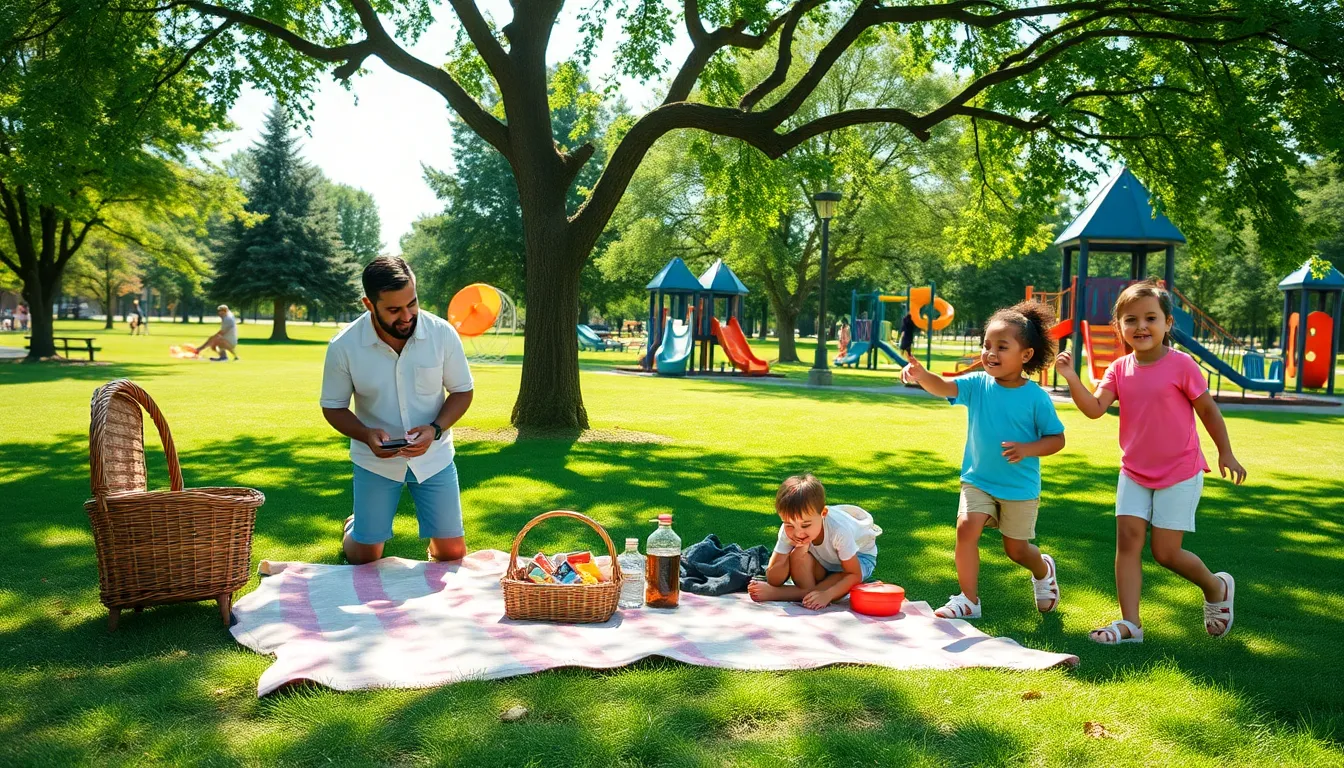A family treasure hunt transforms an ordinary day into an exciting adventure filled with laughter and teamwork. It’s not just about finding hidden items; it’s about creating lasting memories and strengthening bonds among family members. Whether indoors or outdoors, this engaging activity sparks creativity and encourages problem-solving skills in both kids and adults.
Planning a treasure hunt can be as simple or elaborate as desired. With a little imagination and some clever clues, families can embark on a journey that captivates everyone involved. As they search for treasures, participants develop a sense of camaraderie and joy, making it a perfect way to spend quality time together.
Table of Contents
ToggleWhat Is a Family Treasure Hunt?
A family treasure hunt is a fun and interactive activity that encourages family members to work together in search of hidden items or clues. Participants follow a series of hints, which can lead to physical treasures or simply the joy of discovery. The objective focuses on collaboration, problem-solving, and creativity as families navigate through challenges and puzzles.
Family treasure hunts vary in complexity. Some can involve outdoor exploration at local parks, while others may take place indoors, utilizing different rooms or even backyards. Clues can range from riddles to images, guiding participants from one location to the next. This activity reinforces teamwork and communication skills, providing opportunities for families to bond in an enjoyable setting.
Treasures can include small toys, homemade coupons, or family photos, adding a personal touch that deepens the experience. By integrating educational elements or themed adventures, families can craft hunts tailored to the preferences and ages of participants, ensuring engagement and excitement throughout the event.
Benefits of Family Treasure Hunts


Family treasure hunts offer numerous advantages, enhancing family connections and creating lasting memories. These activities promote interaction, development, and engagement among participants.
Encouraging Teamwork
Encouraging teamwork is a core benefit of family treasure hunts. Family members collaborate to solve clues, fostering communication and cooperation. Participants learn to delegate tasks, share ideas, and support each other. Skills like listening, problem-solving, and critical thinking improve as they work towards a common goal. The shared success of finding hidden treasures strengthens family dynamics and builds trust among participants.
Fostering Creativity
Fostering creativity occurs naturally during family treasure hunts. Designing clues and treasure maps requires imagination, prompting participants to think outside the box. Family members can create unique themes or challenges that spark innovative ideas. Engaging in creative activities cultivates resourcefulness and adaptability. Children, in particular, gain confidence in their imaginative abilities, which can translate into other areas of life.
Planning a Successful Treasure Hunt
Planning a successful treasure hunt requires thoughtful consideration of themes and clues. These elements enhance the experience and ensure family members remain engaged throughout the adventure.
Choosing a Theme
Choosing a theme sets the tone for the treasure hunt and sparks excitement. Classic themes include pirates, detectives, or nature exploration. For a pirate-themed hunt, clues may lead participants to discover hidden “gold” (chocolate coins or tokens). A detective theme can involve solving a mystery where participants uncover a “criminal” (a family member dressed up) through clues. Seasonal themes, such as Halloween or holidays, offer the chance to integrate festive elements, enriching the experience. Themes can also align with family interests, allowing customization that fits participants’ ages and preferences.
Creating the Clues
Creating clues serves as a critical component in planning a treasure hunt. Clues can manifest as riddles, puzzles, or visual hints guiding participants to each stage. Use straightforward language for younger children and increase complexity for older participants, promoting challenge without frustration. Incorporating landmarks within the home or local area as clues adds a scavenger-like quality to the hunt. Clues can be hidden in everyday items, such as books or kitchen drawers, making the adventure feel organic. Using creative formats, like poem-style instructions or drawings, further enhances the intrigue, encouraging collaboration and communication among family members as they interpret the hints.
Tips for a Memorable Experience
Creating a memorable family treasure hunt involves careful planning and thoughtful execution. Consider the following tips to ensure everyone has a fantastic time.
Involving All Family Members
Involving all family members enhances engagement and enjoyment. Assign roles based on age and preferences, allowing everyone to contribute. For example, younger children can handle simpler tasks like finding items, while older kids can create clues. Encourage collaboration by making teams of mixed ages; this approach promotes teamwork. Finally, incorporate challenges that require different skills, such as puzzle-solving or mapping. These strategies ensure that every participant feels included and valued.
Safety Considerations
Safety is a top priority during a family treasure hunt. Select safe locations, whether indoors or outdoors, and check for potential hazards, such as uneven ground or sharp objects. If choosing an outdoor setting, ensure the area is secure and accessible. Establish clear boundaries to keep everyone within a defined space. Additionally, consider weather conditions; prepare for rain or extreme temperatures by adjusting plans accordingly. Keep a first-aid kit on hand, and remind family members to stay hydrated and informed during the activity.
A family treasure hunt offers an unforgettable way to create cherished memories while strengthening bonds. By encouraging teamwork and creativity, it transforms a simple day into an engaging adventure filled with laughter and discovery. Families can tailor their hunts to fit their unique dynamics and preferences, ensuring everyone enjoys the experience.
Planning thoughtful themes and clues not only enhances excitement but also fosters communication and problem-solving skills among participants. With careful consideration of safety and inclusivity, families can embark on a treasure hunt that’s both fun and educational. Ultimately, this activity cultivates trust and connection, making it a wonderful addition to any family’s repertoire of bonding experiences.








